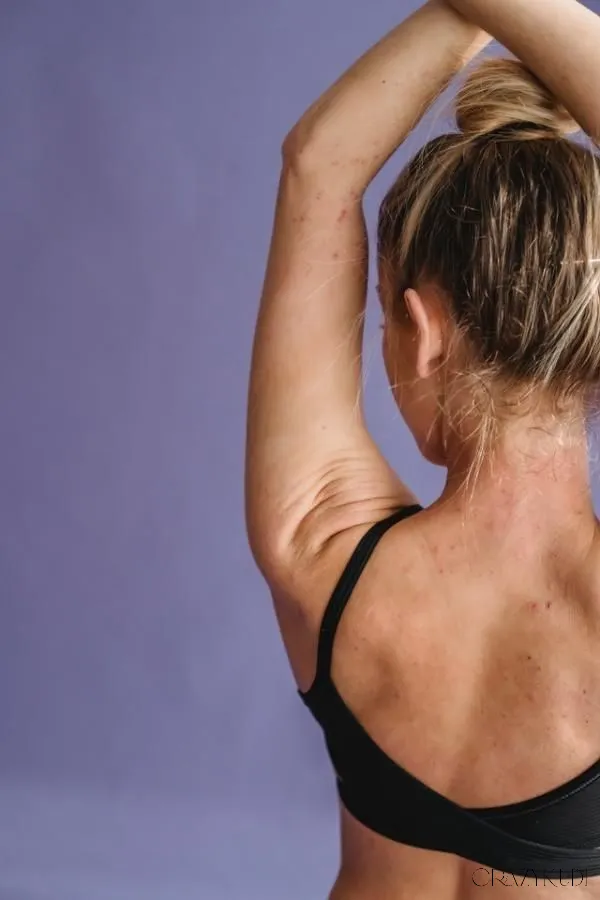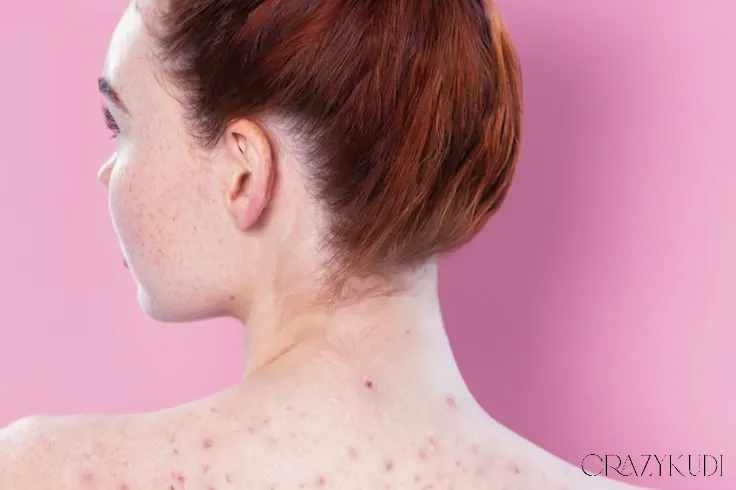If you’ve ever had acne breakouts in areas where your clothes rub, your backpack straps sit, or your sports gear presses against your skin, then you’ve likely experienced Acne Mechanica. As a dermatologist, I see this form of acne frequently, and while it’s common, it’s also easily preventable and treatable with the right approach.
In this blog post, we’ll explore exactly what Acne Mechanica is, what causes it, and most importantly, how to treat and prevent it.
What Is Acne Mechanica?
Acne Mechanica is a type of body acne that’s primarily caused by friction, heat, or pressure on the skin. It’s not caused by the same factors that typically cause facial acne (such as bacteria or hormonal changes) but instead results from external forces that irritate the skin.
Commonly, Acne Mechanica appears in areas where clothing, accessories, or gear rub against the skin—such as the back, chest, shoulders, or face. This friction causes the skin to become irritated, pores become clogged, and breakouts (from small pimples to large cysts) develop.
What Causes Acne Mechanica?
The main cause of Acne Mechanica is physical pressure and friction, but it’s often accompanied by other factors that exacerbate the condition. Here’s what triggers Acne Mechanica:
✅ 1. Friction and Pressure from Clothing or Gear
This is the most common cause of Acne Mechanica. Tight clothing, sports bras, backpack straps, or helmets trap sweat and create friction on the skin. This causes the outer layer of the skin to become irritated, leading to clogged pores and breakouts.
✅ 2. Sweat and Heat
When you sweat, the moisture can mix with oil and dead skin cells, clogging pores and trapping bacteria. When combined with friction, it makes the skin more likely to break out.
✅ 3. Occlusion (Covered Skin)
Wearing tight clothing or accessories for long periods of time can prevent the skin from breathing properly, leading to clogged pores. This is especially common in athletes or anyone who wears gear like pads or helmets for extended periods.
✅ 4. Hygiene and Skin Care
Poor hygiene or not washing off sweat and bacteria promptly after physical activity can also contribute to the development of Acne Mechanica.
How to Treat Acne Mechanica: A Step-by-Step Guide
Treating Acne Mechanica requires a combination of prevention and treatment. Below are the key steps for keeping your skin clear and free from the friction and pressure that leads to this type of acne.
✅ 1. Wear Loose, Breathable Clothing
The first line of defense against Acne Mechanica is to reduce friction. Wear loose-fitting clothing made from natural, breathable fabrics like cotton that allow your skin to breathe.
- Avoid tight straps or clothing that rub against the skin for long periods.
- Opt for moisture-wicking fabrics (especially for workouts) that pull sweat away from your skin.
Tip: If you’re an athlete, opt for gear made from lightweight, breathable materials that don’t trap sweat and heat.
✅ 2. Use Acne-Fighting Body Washes and Exfoliants
Cleansing your skin after exercise and wearing gear is crucial to remove sweat, dirt, and oils from your skin. Look for body washes that contain salicylic acid (BHA) or benzoyl peroxide to help prevent clogged pores.
Dermatologist-Approved Products:
- PanOxyl 10% Acne Foaming Wash (Benzoyl Peroxide)
- CeraVe SA Body Wash for Rough & Bumpy Skin (Salicylic Acid)
- Neutrogena Body Clear Body Wash (Salicylic Acid)
Exfoliating gently 2-3 times a week with products that contain salicylic acid or glycolic acid can help keep pores clear and reduce buildup of dead skin cells.
Also read: Chest Acne: What Causes It and How to Get Rid of It for Good
✅ 3. Apply Spot Treatments with Benzoyl Peroxide or Retinoids
For stubborn acne caused by friction or pressure, apply spot treatments directly to the affected areas. Benzoyl peroxide is effective at killing bacteria, while retinoids (like adapalene) can help prevent pores from clogging.
Top Spot Treatments:
- Differin Gel (Adapalene 0.1%) – an over-the-counter retinoid
- La Roche-Posay Effaclar Duo (Benzoyl Peroxide & Niacinamide)
- Clean & Clear Persa-Gel 10 (Benzoyl Peroxide)
✅ 4. Moisturize Your Skin (Even if You Have Acne)
Even acne-prone skin needs moisture. Using a lightweight, non-comedogenic moisturizer will keep your skin hydrated and help prevent irritation from harsh acne treatments.
Best Moisturizers:
- Neutrogena Hydro Boost Water Gel
- CeraVe Daily Moisturizing Lotion
- La Roche-Posay Toleriane Ultra Face Moisturizer
✅ 5. Shower Promptly After Exercise or Wearing Gear
Always shower as soon as possible after physical activity, especially if you’re sweating heavily or wearing tight gear. This helps remove sweat, oils, and bacteria that can cause breakouts.

✅ 6. Spot Treat with Antifungal Products (If Needed)
Sometimes, Acne Mechanica can be confused with fungal acne (Malassezia folliculitis), which is caused by yeast overgrowth in the hair follicles. If your breakouts seem uniform and itchy, an antifungal treatment may be needed.
Antifungal Products:
- Nizoral Anti-Dandruff Shampoo (can be used on the body)
- Selsun Blue Medicated Shampoo
- Clotrimazole Cream (topical antifungal)
Also read: How to Get Rid of Back Acne: A Complete Guide to Clear, Smooth Skin
When to See a Dermatologist
If your Acne Mechanica is severe, persistent, or causing scarring, it’s time to consult a dermatologist. A professional may recommend:
- Prescription-strength topical treatments like retinoids or antibiotics
- Oral antibiotics (for widespread acne)
- Hormonal treatments if acne is related to hormonal fluctuations
- Laser or light therapy to reduce inflammation and bacteria
Final Thoughts
Acne Mechanica may be a frustrating condition, but it’s manageable with the right approach. By reducing friction, using acne-fighting products, and adopting proper hygiene habits, you can minimize breakouts and keep your skin clear.
Remember, the key to preventing Acne Mechanica is to prevent irritation in the first place. And with consistent care and the right products, your skin will thank you.

